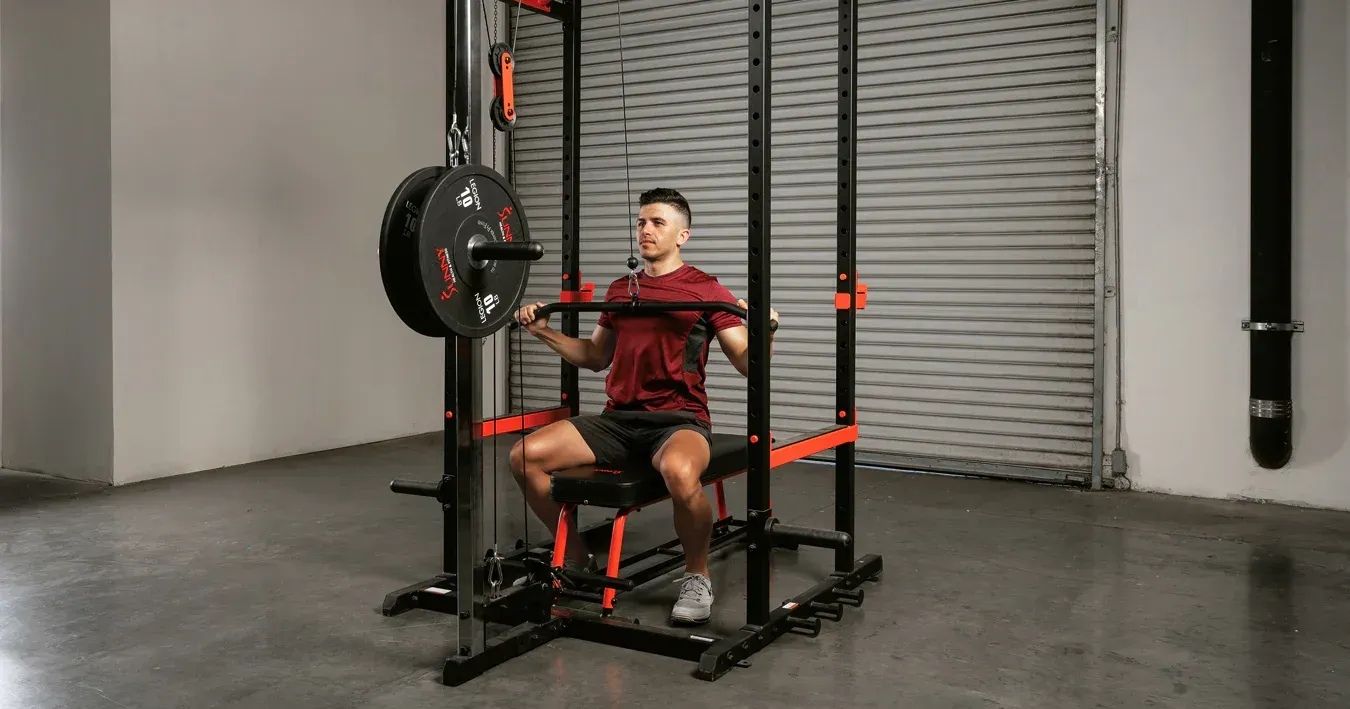Weight Lifting Machines in the Gym and What They Do
If you’re stepping into the world of fitness or looking to refine your gym routine, you’ve likely come across a squat machine. These machines are a game-changer for both beginners and seasoned fitness enthusiasts. By offering support and guidance, squat machines help you perform squats safely, ensuring proper form and reducing the risk of injury. Whether you're aiming to tone your legs, strengthen your glutes, or improve overall lower body strength, the squat machine is a versatile and effective tool to have in your fitness arsenal.
In this guide, we’ll walk you through everything you need to know about squat machines—from setting up to executing the perfect squat. Let’s dive in!
Why Use a Squat Machine?
Before jumping into the "how," let’s talk about the "why." Squats are one of the most effective exercises for building lower body strength, improving posture, and enhancing mobility. However, improper technique can lead to injuries or strain. A squat machine provides stability and ensures your body stays in the correct position throughout the movement.
Key Benefits:
- Supports Proper Form: Guides your body to perform squats with the correct posture.
- Enhances Safety: Reduces strain on joints and minimizes the risk of injury.
- Targets Key Muscles: Focuses on quads, glutes, hamstrings, and calves.
- Great for Beginners: Provides a controlled environment to learn the basics of squatting.
Getting Started: Setting Up the Squat Machine
Proper setup is crucial for a safe and effective workout. Follow these steps to prepare your squat machine:
1. Adjust the Machine to Your Height
- Locate the shoulder pads or bar on the machine.
- Adjust the height so it rests comfortably on your shoulders when standing upright. It should neither press down uncomfortably nor feel too loose.
- If your squat machine has a foot platform, ensure it’s placed to allow natural alignment with your knees and ankles.
2. Load the Weights (If Applicable)
- Start with lighter weights to avoid straining your muscles, especially if you’re a beginner.
- Add weights evenly on both sides to maintain balance.
3. Position Your Body
- Stand under the shoulder pads or bar.
- Place your feet shoulder-width apart on the platform, toes slightly pointed out.
- Ensure your back is straight and your chest is lifted.
Performing the Perfect Squat on a Squat Machine
Once the machine is set up and you’re in position, it’s time to get squatting! Here’s a step-by-step guide to performing the perfect squat:
Step 1: Engage Your Core
Before lowering your body, tighten your core muscles. This helps stabilize your spine and prevents rounding of the back during the movement.
Step 2: Lower Your Body
- Slowly bend your knees and lower your body as if sitting back into a chair.
- Keep your chest upright and your weight evenly distributed between your heels and midfoot.
- Aim to lower your hips until your thighs are parallel to the platform or slightly lower, depending on your flexibility and fitness level.
Step 3: Pause at the Bottom
Hold the position for 1–2 seconds. This brief pause activates your glutes and quads, making the movement more effective.
Step 4: Push Back Up
- Drive through your heels to push yourself back to the starting position.
- Avoid locking your knees at the top to maintain tension in your muscles.
Step 5: Repeat
Perform 8–12 repetitions per set, adjusting the number based on your fitness goals.
Common Mistakes to Avoid
Even with a squat machine, it’s easy to slip into bad habits. Keep these tips in mind to ensure a safe and effective workout:
- Don’t Let Your Knees Cave In: Keep your knees aligned with your toes to prevent strain on your joints.
- Avoid Rounding Your Back: Maintain a neutral spine to protect your lower back.
- Don’t Rush the Movement: Slow, controlled movements ensure you’re engaging the right muscles.
- Avoid Overloading Weights: Start light and gradually increase the weight as your strength improves.
Tips for Maximizing Your Squat Machine Workout
Want to take your squat game to the next level? Here are some tips:
- Incorporate Variations: Try single-leg squats, wide-stance squats, or pulse squats to target different muscle groups.
- Track Your Progress: Keep a record of your weight, reps, and sets to monitor improvement over time.
- Pair with Other Exercises: Combine squats with lunges, deadlifts, or leg presses for a full lower-body workout.
- Stretch Afterward: Post-workout stretches help reduce soreness and improve flexibility.
Who Can Benefit From Using a Squat Machine?
The squat machine is perfect for:
- Beginners: Provides a guided path to learn the basics of squatting.
- Rehabilitation Patients: Offers support for those recovering from injuries.
- Athletes: Enhances explosive power and strength for sports performance.
- Home Gym Enthusiasts: Its compact design makes it an excellent choice for small spaces.
FAQs
Q: Can I use a squat machine every day?
A: While squats are a fantastic exercise, your muscles need time to recover. Aim for 2–3 squat-focused workouts per week.
Q: Is the squat machine better than free weights?
A: Both have their benefits. Squat machines offer safety and guidance, while free weights improve balance and coordination. Use both for a well-rounded routine.
Q: How much weight should I start with?
A: Begin with a weight you can lift comfortably for 10–12 reps. Gradually increase as your strength improves.
Conclusion
The squat machine is a powerful tool for anyone looking to build lower body strength, improve form, and enjoy a safe and effective workout. By following the tips and techniques outlined above, you’ll be well on your way to mastering the squat machine and reaping its full benefits. Whether you’re a beginner or a fitness veteran, the squat machine is a must-have in your fitness journey.
Now it’s time to hit the gym and put this knowledge into action! Remember, progress takes time, so be patient, stay consistent, and enjoy the process. Happy squatting!





